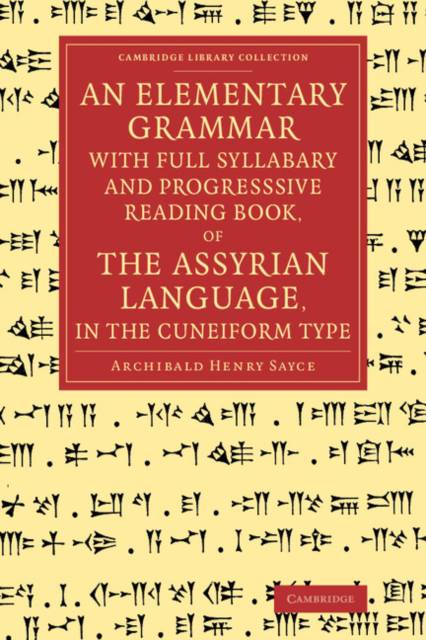
- Afhalen na 1 uur in een winkel met voorraad
- Gratis thuislevering in België vanaf € 30
- Ruim aanbod met 7 miljoen producten
- Afhalen na 1 uur in een winkel met voorraad
- Gratis thuislevering in België vanaf € 30
- Ruim aanbod met 7 miljoen producten
Zoeken
An Elementary Grammar with Full Syllabary and Progresssive Reading Book, of the Assyrian Language, in the Cuneiform Type
Archibald Henry Sayce
€ 40,45
+ 80 punten
Omschrijving
Archibald Henry Sayce (1845-1933) became interested in Middle Eastern languages and scripts while still a teenager. Old Persian and Akkadian cuneiform had recently been deciphered, and in the early 1870s the translation of part of the epic tale of Gilgamesh attracted considerable publicity. Based at Oxford, the young philologist Sayce published several books on Assyrian in quick succession. In the preface to this 1875 teaching grammar/reader, he notes that in just three years since the publication of his grammar for specialists (also reissued in this series), Assyrian had become a 'popular' subject, with students 'flocking in from all sides'. His book was written in response to the demand for beginners' books that were similar to those available for Greek or Hebrew. The texts that follow the syllabary and outline grammar are accompanied by transliterations and translations, with substantial accompanying notes on vocabulary, grammar points, and Hebrew cognates.
Specificaties
Betrokkenen
- Auteur(s):
- Uitgeverij:
Inhoud
- Aantal bladzijden:
- 150
- Taal:
- Engels
- Reeks:
Eigenschappen
- Productcode (EAN):
- 9781108077958
- Verschijningsdatum:
- 30/10/2014
- Uitvoering:
- Paperback
- Formaat:
- Trade paperback (VS)
- Afmetingen:
- 156 mm x 234 mm
- Gewicht:
- 240 g

Alleen bij Standaard Boekhandel
+ 80 punten op je klantenkaart van Standaard Boekhandel
Beoordelingen
We publiceren alleen reviews die voldoen aan de voorwaarden voor reviews. Bekijk onze voorwaarden voor reviews.











